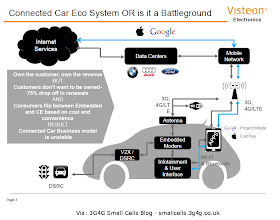I first wrote about LTE-U (or U-LTE as referred by others) back in December last year pointing towards the Qualcomm presentation
here. As things move fast in our industry, quite a few things have happened in the last 6 months. Huawei did a
demo of U-LTE in Mobile World Congress this year and LTE-U has been a constant
topic of discussion in various 3GPP meetings. A half-day
workshop is due to take place in June to discuss this topic further. In the meantime I have summarised some of the discussions that took place (unofficially?) in Jan 2014 between the interested parties.
To be clear, the discussions for LTE-U are centred on the 5GHz unlicensed spectrum. As you can see from the picture above, there is a massive amount of spectrum that is available, either free to use (unlicensed) or in a lightly licensed way.
There are strict rules and regulations in place to make sure this license is not misused or monopolised. There will be a need for Dynamic Spectrum Access (DSA) techniques that I have
discussed here. The current LTE standards do not have a DSA inbuilt and hence referred to as "Rude". The following is from a recent
Light Reading article.
The technical concern with LTE-U, as Peters describes it, is that LTE is a "rude" technology. WiFi includes a "politeness protocol" that LTE lacks, meaning that WiFi will back off if it senses interference from other users. Eventually rude ol' LTE operating in WiFi's polite bands could take over the band.
The 3GPP called another unofficial meeting in January to discuss concerns around LTE-U, which also included the potential effect on the value of licensed spectrum, the need for international harmonization of the unlicensed bands used for LTE-U, and whether the technology would be for downlink only or uplink as well. The group met again in March, primarily to work out timing for the new technology's deployment.
Huawei presentation explains why unlicensed carrier offloading, see the embedded presentation for details.
NTT Docomo shows the various deployment scenarios and also lists the regulatory aspects, especially in Japan. See the complete presentation below:
Nokia has even gone ahead and done simulations for different scenarios. The scenario above shows LTE deployment in the same unlicensed band as WLAN as you can see, the results are similar to the interference in WLAN-WLAN case.
There is also a roadmap to how LTE-U standardisation will work in 3GPP, hopefully after the workshop in June, we will probably hear more.
As expected, some of the operators with heavy investments in WiFi (like AT&T) have some reservations on LTE-U. Some analysts on the other hand are sceptical on how much savings there would be, taking the interference into account. Note that spectrum is just one part of deployment costs, there are many other factors to consider. Personally, I don't have an issue whether this will work or not, it definitely would do but with all the advancements in LTE-Wi-Fi Interworking, I think we may be able to do a better job with just selective deployment of LTE-U and using technologies like
MAPCON,
IFOM,
Hotspot 2.0, etc.
Added on 9th July 20143GPP held their workshop on unlicensed LTE on 13/06/2014. See the news on 3GPP website
here. All documents are available
here.


















































